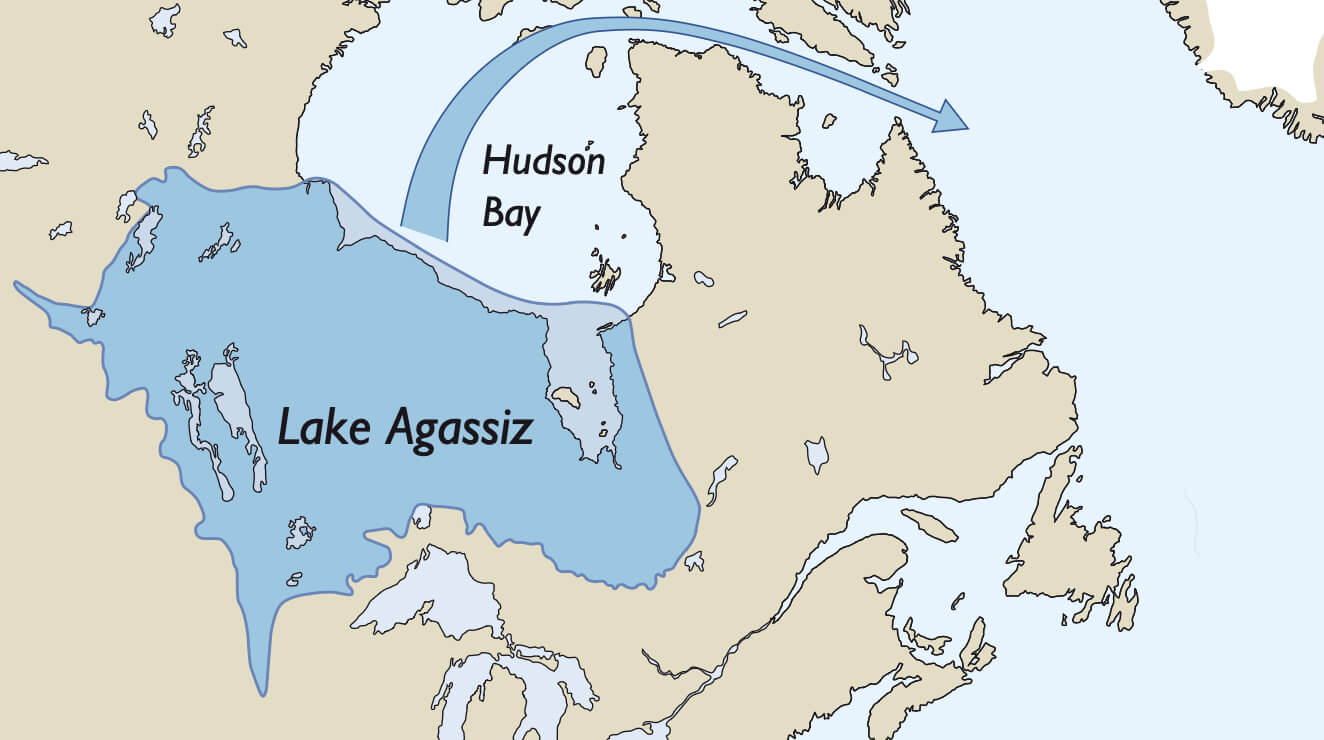
How to Cite
Share
Abstract
The need for accurate predictions of future environmental change under conditions of global warming has led to a great interest in the most pronounced climate change known from the Holocene: an abrupt cooling event around 8200 years before present (present = A.D. 1950), also known as the ‘8.2 ka cooling event’ (ka = kilo-annum = 1000 years). This event has been recorded as a negative δ18O excursion in the central Greenland ice cores (lasting 160 years with the lowest temperature at 8150 B.P.; Johnsen et al. 1992; Dansgaard 1993; Alley et al. 1997; Thomas et al. 2007) and in a variety of other palaeoclimatic archives including lake sediments, ocean cores, speleothems, tree rings, and glacier oscillations from most of the Northern Hemisphere (e.g. Alley & Ágústsdóttir 2005; Rohling & Pälike 2005). In Greenland the maximum cooling was estimated to be 6 ± 2°C (Alley et al. 1997) while in southern Fennoscandia and the Baltic countries pollenbased quantitative temperature reconstructions indicate a maximum annual mean temperature decrease of around 1.5°C (e.g. Seppä et al. 2007). Today there is a general consensus that the primary cause of the cooling event was the final collapse of the Laurentide ice sheet near Hudson Bay and the associated sudden drainage of the proglacial Lake Agassiz into the North Atlantic Ocean around 8400 B.P. (Fig. 1; Barber et al. 1999; Kleiven et al. 2008). This freshwater outflow, estimated to amount to c. 164,000 km3 of water, reduced the strength of the North Atlantic thermohaline circulation and thereby the heat transported to the North Atlantic region, resulting in an atmospheric cooling (Barber et al. 1999; Clark et al. 2001; Teller et al. 2002). The climatic consequences of this meltwater flood are assumed to be a good geological analogue for future climate-change scenarios, as a freshening of the North Atlantic is projected by almost all global-warming models (e.g. Wood et al. 2003; IPCC 2007) and is also currently being registered in the region (Curry et al. 2003). In an ongoing project, the influence of the 8.2 ka cooling event on a Danish terrestrial and lake ecosystem is being investigated using a variety of biological and geochemical proxy data from a sediment core extracted from Højby Sø, north-west Sjælland (Fig. 2). Here we present data on changes in lake hydrology and terrestrial vegetation in response to climate change, inferred from macrofossil data and pollen analysis, respectively.
How to Cite
Share
Copyright (c) 2008 Peter Rasmussen, Mikkel Ulfeldt Hede, Nanna Noe-Nygaard, Annemarie L Clarke, Rolf D Vinebrooke

This work is licensed under a Creative Commons Attribution 4.0 International License.
Downloads
Edited by Ole Bennike and A.K. Higgins
This Review of Survey activities presents a selection of 22 papers reflecting the wide spectrum of activities of the Geological Survey of Denmark and Greenland, from the microscopic to the plate-tectonic level.
The Survey's activities in Denmark are illustrated by 13 articles. Five of them deal with petroleum-related [...]









